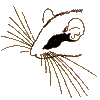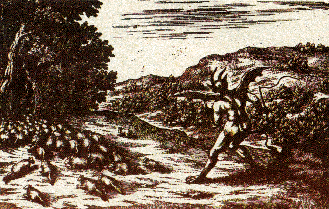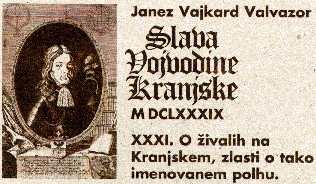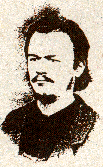

 Valvasor's myth, 1689: Dormouse hunt; Devil chasing dormice. VALVASOR,
J. W.: Die Ehre Dess Hertzogthums Crain. I/3, Laybach.
Valvasor's myth, 1689: Dormouse hunt; Devil chasing dormice. VALVASOR,
J. W.: Die Ehre Dess Hertzogthums Crain. I/3, Laybach.
The following text is taken from:
Peršič, M.: Dormouse hunting as part of Slovene national identity. Nat. Croat., Vol. 7, No. 3., 199-211, Zagreb, 1998.
ISSN 1330-0520 / UDK 599.323.2:591.61'611(497.4)
Nat. Croat., Vol. 7, No. 3., 199-211, Zagreb, 1998. Hrvatski prirodoslovni muzej, Demetrova 1, Zagreb, Croatia
MAGDA PERŠIČ
Notranjski muzej, Ljubljanska 10, Postojna, Slovenia
Among the rural population in 17th, 18th and 19th centuries a myth about the devil represented by the dormouse shepherd was widespread. The Devil, the dormouse shepherd, clicked, whistled and made a hullabaloo while chasing dormice through the woods.
 |
 |
The famous historian VALVASOR (1689) was the first to describe dormouse hunting, still believeing the devil was herding dormice. Even after Steinberg, Hacquet and Kordesh had found an explanation for the myth, that the clicking, whistling and hullabalooing was produced by an owl, even in 1840 the original myth was still deeply held by simple people (KORDESCH, 1840).
The myth was the basis for the novel of Josip JURCIC: "An Autumn Night Among the Slovenian Dormouse Hunters", published in 1865. It is interesting that the story was still alive after the second world war in the forests of Kocevsko. It is fascinating that even today the myth not only functions as a part of the collective memory of dormouse hunters but is also a typical and very popular Slovenian myth. Returning to the myth I would like to comment on the analogy between the dormouse keeper - the Devil - and the god of shepherd cults - Pan, who expresses animal cunning. Is animal cunning also typical of the dormouse? Panic, which is derived from Pan, confuses the spirit and brings disquiet to the senses. Does this state of mind of dormouse hunters turn them away from the Devil, as is described by Valvasor? Is this the restless libido that according to medieval morality should be suppressed, or is it allowed to be transformed into a passion for hunting. The neoplatonic and Christian philosophers saw Pan as the synthesis of paganism. The mysterious clicking in this example foretells the death of the Great Pan, which at the same time also means the death of pagan gods. The myth brings us into contact with the elementary nature myth about the birth of Dionysus from Jupiter's thigh (CHEVALIER, 1994), which is as hollow as the tree hole where the dormouse lives. Could the dormouse be regarded as Dionysus and what are the roles of the Devil and the dormouse hunter?
Maybe the myth could be explained if we knew the initial reasons for dormouse hunting; the attitude of people towards the dormouse and the symbolic meaning of the dormouse. The literature offers us no answers to these questions. It is interesting that my informants did not show much pity for the dormouse, but they do feel compassion when they are talking about deer, for example. We could say that people show an ambivalent attitude towards dormice. On one hand they suppose it to bad, disgusting; on the other hand, they like its fur, admire its intelligence.
This discussion of the ethnological material and the social aspect of dormouse trapping may continue with some brief consideration of its nature and identity.
Back to Dormouse hunting as part of Slovene national identity